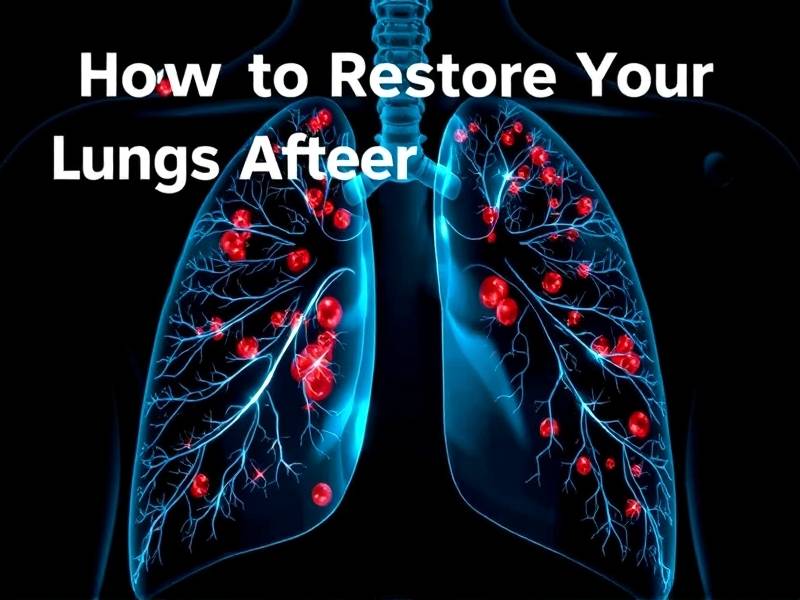How to Restore Your Lungs After Quitting Smoking: Effective Tips and Strategies
The Journey to Healthier Lungs
Quitting smoking is a significant step towards improving your health. But have you ever wondered about the journey of your lungs post-cessation? The process of lung restoration can be challenging, but with the right strategies and tips, you can breathe easier and healthier. In this article, we'll explore effective ways to help your lungs recover after quitting smoking.
Understanding Lung Restoration
What Happens When You Quit Smoking?
When you quit smoking, your body starts to repair itself immediately. Within just 20 minutes after your last cigarette, your heart rate and blood pressure begin to drop. Over time, your lungs start to clear out tar and other harmful substances accumulated from years of smoking.
The Timeline of Lung Restoration
- 1-3 Months: You may notice an improvement in lung function and a decrease in shortness of breath.
- 1-9 Months: Your coughing may decrease as the lungs start to heal.
- 1 Year: Your risk of heart disease starts to decline.
- 5 Years: Your risk of stroke decreases.
- 10 Years: Your risk of lung cancer is about half that of a smoker.
Effective Tips for Lung Restoration
1. Stay Hydrated
Drinking plenty of water helps flush out toxins from your body. Aim for at least 8 glasses a day.

2. Exercise Regularly
Physical activity improves lung capacity and overall health. Start with light exercises like walking or yoga and gradually increase intensity.

3. Avoid Secondhand Smoke
Secondhand smoke can hinder the healing process. Stay away from smoky environments.
4. Get Adequate Sleep
Sleep plays a crucial role in recovery. Aim for 7-9 hours per night.
5. Practice Deep Breathing Exercises
Deep breathing exercises can help improve lung function by increasing oxygen intake.
Strategies for Long-Term Success
1. Seek Support
Join a support group or find an accountability partner who understands your journey.
2. Set Realistic Goals
Break down your quit-smoking journey into smaller goals, such as smoke-free days or weeks.
3. Reward Yourself
Celebrate milestones along the way with small rewards that don't encourage relapse.
Conclusion
Restoring your lungs after quitting smoking is a gradual process that requires patience and dedication. By following these tips and strategies, you can breathe easier and enjoy improved health in the long run. Remember, every step towards quitting is progress, no matter how small it may seem at first glance.
Remember, taking care of your lungs is an ongoing commitment beyond quitting smoking – it's about maintaining a healthy lifestyle that supports their recovery and longevity.
